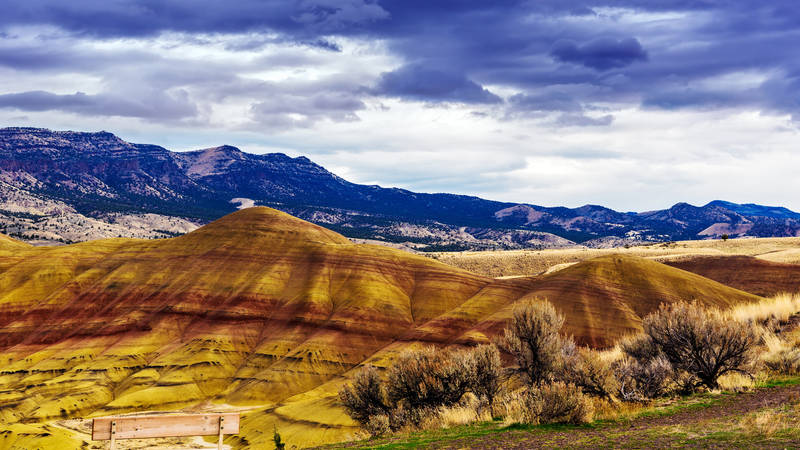“This long-overdue update shows a commitment to balancing conservation with oil and gas leasing on public lands, better prioritizing the protection of our national parks from the relentless encroachment of fossil fuel development." –Beau Kiklis, NPCA's Senior Program Manager of Energy and Landscape Conservation
WASHINGTON– Today, the Bureau of Land Management (BLM) released a final rule to update oil and gas leasing practices on public land. This long-overdue update equips the bureau with commonsense tools to strategically steer future oil and gas development away from national parks.
Over 80 national park units border public lands managed by the BLM, making the health of our parks directly affected by decisions made by the bureau. The Oil and Gas Rule updates the bureau’s leasing program to prevent poorly sited drilling in and near critical wildlife areas, watersheds, or cultural and natural resources, like national parks.
“This long-overdue update shows a commitment to balancing conservation with oil and gas leasing on public lands, better prioritizing the protection of our national parks from the relentless encroachment of fossil fuel development,” said Beau Kiklis, senior program manager of energy and landscape conservation at the National Parks Conservation Association (NPCA). “NPCA commends the Biden administration, Department of the Interior, and Bureau of Land Management for bringing the first significant update to our oil and gas leasing program in over 30 years.”
The Oil and Gas Rule was met with overwhelming public support, as 99% of public comments encouraged the bureau to adopt the rule, which updates and antiquated oil and gas leasing system that once prioritized the oil and gas industry over critical concerns like the loss of wildlife habitat, pollution, and climate change impacts.
90% of the 245 million acres of public land managed by the bureau are open to oil and gas extraction. Today’s commonsense rule now provides the bureau with leverage to allow for more comprehensive consideration of land use to protect our most important places.
What could this rule mean for national park protection?
Carlsbad Caverns National Park: Despite stunning underground geologic features, Carlsbad Caverns National Park, situated in one of the most active oil and gas regions, has long faced risk from nearby fossil fuel development. Continued drilling poses threats, including gas or fluid leaks into cave passages, jeopardizing visitor safety during cavern hikes. The Oil and Gas Rule empowers the BLM to redirect development away from parks, protecting the underground caverns and preventing groundwater contamination.
Grand Teton National Park: Grand Teton National Park and the Greater Yellowstone ecosystem provide refuge for many Northern Rockies species, including big game like mule deer and pronghorn. The parks and surrounding landscapes, providing essential habitat and migration corridors for pronghorn and mule deer, are now better protected from future drilling.
Dinosaur National Monument: Straddling the Colorado-Utah border, Dinosaur National Monument is renowned for its dinosaur fossils embedded in rocks and canyon walls and for featuring over 800 paleontological sites. The Oil and Gas Rule provides real pathways for the BLM to stop leasing these unique landscapes to oil and gas development.
Chaco Culture National Historic Park: Oil and gas drilling within or near parks dramatically changes the night sky. Excessive light pollution from industrial lighting can compromise the cultural values held in many national parks, such as the celestial calendars built at Chaco Culture National Historical Park in New Mexico.
In celebrating this historic update for conservation, we encourage the bureau and the Biden administration to continue to think boldly towards curbing fossil fuel emissions from oil and gas development on public lands. Complementary and decisive actions, such as proactive mineral withdrawal and national monument designations, are essential to protecting our highest-value conservation lands and ensuring our public lands are a key part of the climate solution.
###
About the National Parks Conservation Association: Since 1919, the nonpartisan National Parks Conservation Association has been the leading voice in safeguarding our national parks. NPCA and its more than 1.6 million members and supporters work together to protect and preserve our nation’s most iconic and inspirational places for future generations. For more information, visit www.npca.org.
For Media Inquiries
-
Issues


